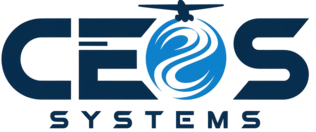Flight tracking has become an essential part of modern air travel, allowing passengers and aviation enthusiasts to monitor flights in real-time. Let’s explore the fascinating history and tracking capabilities of Flight 871, a designation that has played a significant role in aviation history across multiple airlines.
Overview of Flight 871
Flight 871 holds a notable place in aviation history, particularly through its operation by Scandinavian Airlines System (SAS). This flight number gained historical significance as it marked the first fatal accident involving the Sud Aviation Caravelle aircraft, becoming a crucial case study in aviation safety improvements.
The flight’s routes have varied significantly based on the operating airline:
- SAS Route – Copenhagen to Cairo with stops in Düsseldorf, Vienna, Istanbul, and Ankara
- ValiantAir Route – Direct service between Baku (Azerbaijan) and Minsk (Belarus)
Tracking Flight 871
Modern tracking capabilities provide comprehensive flight information through various digital platforms. These systems offer:
- Real-time location updates
- Current altitude and ground speed
- Weather conditions along the route
- Estimated arrival times
- Schedule changes and delays
Real-Time Tracking Tools for Flight 871
| Platform | Features | Update Frequency |
|---|---|---|
| FlightAware | Interactive maps, flight path history, projected routes | Every 1-5 minutes |
| FlightStats | Global flight tracking, status notifications | Real-time updates |
| Airline Apps | Airline-specific information, integrated tracking | Varies by carrier |
Understanding Flight 871 Status Updates
Status indicators provide crucial information through various phases:
- “On time” – Flight operating as scheduled
- “Delayed” – Schedule deviation reported
- “Boarding” – Passenger boarding in progress
- “In Flight” – Aircraft currently airborne
- “Arrived” – Flight reached its destination
History and Notable Events of Flight 871
The flight’s history is marked by significant developments in commercial aviation. The SAS incident involving the Sud Aviation Caravelle became a watershed moment for aviation safety, leading to important industry improvements. Over the decades, Flight 871 has adapted to changing market demands, technological advancements, and evolving route networks, reflecting the dynamic nature of international air travel.
Significant Historical Events Involving Flight 871
The most pivotal moment in Flight 871’s history occurred on January 13, 1969, when SAS operated the service with a Sud Aviation SE-210 Caravelle. During approach to Ankara’s Esenboğa Airport in Turkey, challenging weather conditions led to a tragic crash with multiple fatalities. This incident marked a crucial turning point for the Caravelle program, which had previously maintained an exemplary safety record. The subsequent investigation yielded vital safety improvements that influenced future aircraft designs and operational protocols.
In recent years, ValiantAir Flight 871 encountered a severe turbulence event between Baku and Minsk that resulted in a dramatic altitude drop, causing several passenger and crew injuries. This incident sparked renewed focus on:
- Seat belt compliance during flights
- Clear air turbulence response procedures
- Emergency protocols during unexpected weather events
- Passenger safety awareness measures
- Crew training for severe weather scenarios
Changes in Flight 871 Over the Years
| Era | Aircraft Type | Key Features |
|---|---|---|
| Early Period | Sud Aviation Caravelle | Initial jet service, basic amenities |
| Modern Era | Boeing 777/787 Dreamliner | Enhanced fuel efficiency, advanced safety systems |
The routing evolution of Flight 871 reflects significant industry changes, transforming from SAS’s multi-stop Copenhagen-Cairo service to various point-to-point operations by different carriers. Modern Flight 871 services feature:
- Advanced Wi-Fi connectivity
- Personalized entertainment systems
- Improved passenger comfort features
- Enhanced fuel efficiency
- Modern safety technologies
Practical Information for Passengers of Flight 871
Passengers can access comprehensive flight information through FlightAware’s dedicated portal, offering real-time updates on:
- Departure times and delays
- Estimated arrival updates
- Current flight position
- Route tracking information
- Historical performance data
Route variations exist depending on the operating airline, with American Airlines commonly using this designation for specific international services. Historical SAS operations included multiple European and Middle Eastern stops en route to Cairo, while modern iterations may offer more direct routing options.
Preparing for Your Journey on Flight 871
Essential preparation steps include:
- Verifying flight details through official airline websites or FlightAware
- Checking terminal information and weather conditions 24 hours pre-departure
- Packing strategic carry-on items for flight duration
- Preparing required travel documentation
- Setting up flight status notifications
What to Expect During Flight 871
The onboard experience varies based on route type and operating airline. American Airlines typically provides:
- Structured service timeline with crew welcome
- Regular beverage and meal services
- Personal entertainment screens with on-demand content
- Wi-Fi connectivity for passenger communication
- Regular flight progress updates
